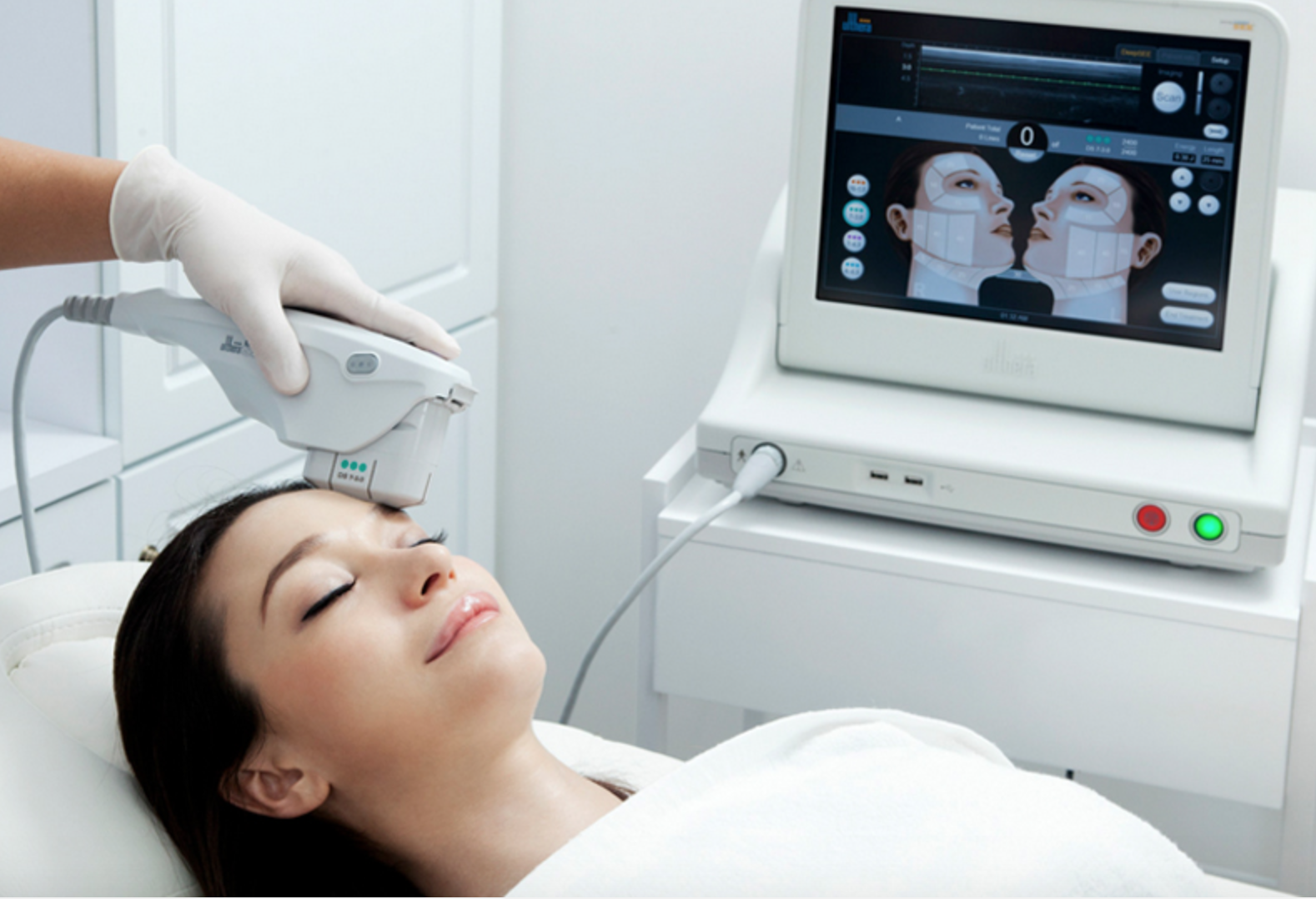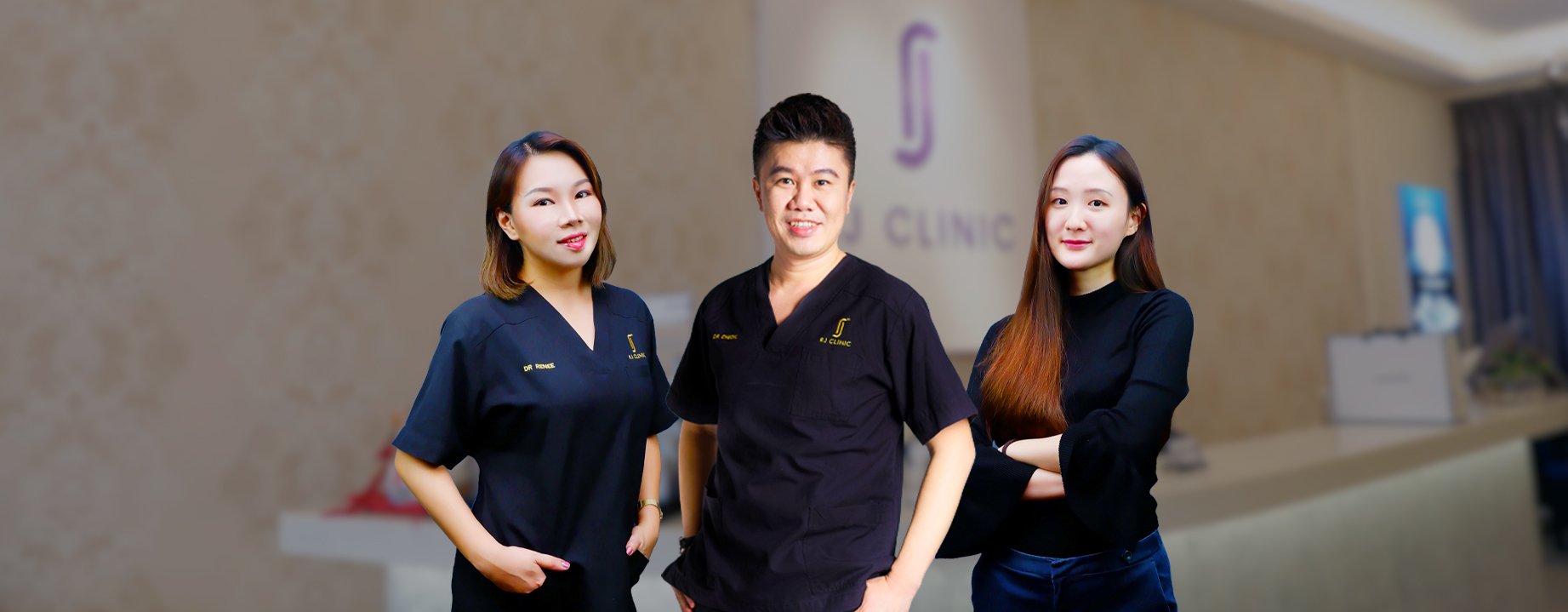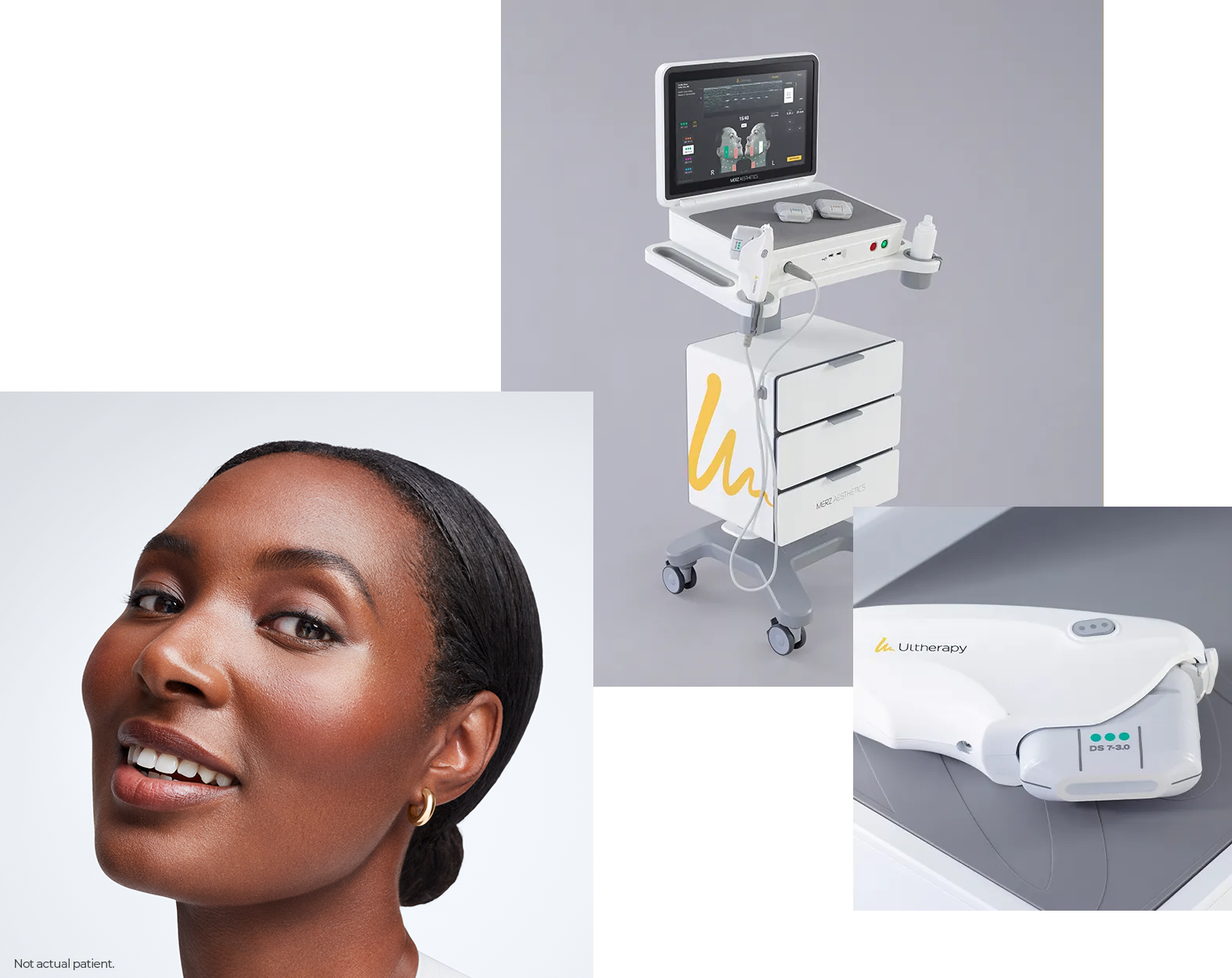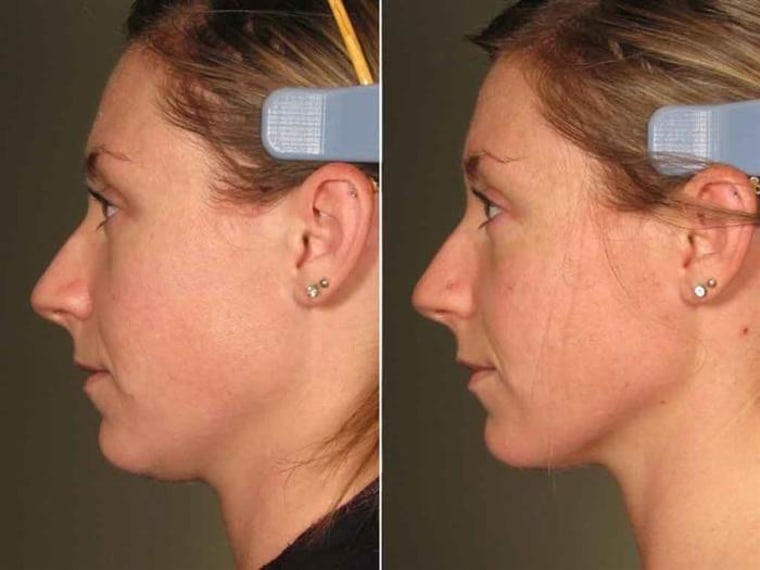Why Is RJ Clinic Ultherapy the Right Option for Rejuvenation?
Why Ultherapy Could Be Medically Necessary: Exploring the Factors for a Non Surgical Lift
Ultherapy is getting interest as a practical option for individuals facing skin laxity as a result of maturing or particular medical problems. This non-surgical treatment boosts collagen manufacturing, offering a remedy that stays clear of the healing time associated with intrusive procedures. As individuals look for to improve not just their appearance however also their total skin health, recognizing the scenarios that require Ultherapy's usage ends up being essential. What factors add to its medical need?
Understanding Ultherapy: What It Is and Just how It Works
Ultherapy, a non-invasive cosmetic treatment, utilizes ultrasound innovation to boost collagen manufacturing and advertise skin tightening up. By supplying focused ultrasound power deep right into the skin, it targets the foundational layers commonly attended to in surgical facelifts. This procedure motivates the body's all-natural healing action, causing gradual training and firm of the skin in time.

Treatment sessions commonly last between 30 to 90 mins, depending on the dimension of the location being treated. While outcomes might not be right away noticeable, perfect results typically show up within 2 to 3 months as collagen proceeds to develop. Ultherapy deals an engaging non-surgical option for individuals looking for skin rejuvenation without the requirement for intrusive treatments.
The Aging Process: Effects on Skin Elasticity and Collagen
Aging certainly brings changes that decrease skin flexibility and collagen manufacturing, leading to noticeable indicators of drooping and wrinkles. As individuals age, the skin's capability to maintain dampness declines, resulting in a drier and much less durable surface area. Collagen, a necessary healthy protein responsible for skin structure, also decreases, triggering the skin to shed its suppleness and younger look. Variables such as sunlight direct exposure, ecological toxins, and way of living selections further increase this decrease in skin top quality.
This loss of flexibility and collagen develops a waterfall of adjustments, consisting of the development of jowls, strengthening nasolabial folds, and an overall drooping look. The skin's assistance system damages, making it extra prone to the impacts of gravity. As a result, numerous individuals seek treatments like Ultherapy to deal with these aging impacts, aiming to restore an extra vibrant, taut appearance without the need for intrusive medical procedures.
Clinical Conditions That May Benefit From Ultherapy
Ultherapy is significantly acknowledged for its possible benefits in addressing different medical conditions. Individuals experiencing skin laxity, those in post-surgical recovery, and patients with persistent skin problems may discover this non-invasive treatment beneficial. By stimulating collagen production, Ultherapy can boost skin suppleness and boost overall look for these groups.
Skin Laxity Problems
Skin laxity can be a significant issue for individuals experiencing numerous medical conditions that impact the honesty and elasticity of their skin. Conditions such as Ehlers-Danlos syndrome, which interferes with collagen production, can cause early skin aging and drooping. In addition, individuals with autoimmune disorders may experience skin modifications that add to laxity. Hormone variations, specifically throughout menopause, also contribute in reducing skin suppleness. Ultherapy, using ultrasound modern technology, targets the much deeper layers of skin, boosting collagen manufacturing and tightening up the influenced areas. This non-invasive therapy may supply a practical service for those seeking to deal with skin laxity resulting from these clinical problems, improving both appearance and self-confidence without the requirement for surgical treatment.
Post-Surgical Healing Help
Post-surgical recuperation can usually existing difficulties, especially for individuals experiencing skin laxity due to surgical treatments. Ultherapy functions as a prospective aid in this situation, making use of ultrasound modern technology to promote collagen production and improve skin rigidity without invasive procedures. People that have undergone surgeries such as renovations, lipo, or other body contouring treatments may locate that Ultherapy improves their recovery by addressing irregular structure and laxity that can occur post-operation. This non-surgical strategy can cause improved visual outcomes, possibly decreasing the demand for extra surgical interventions. Furthermore, it might help relieve discomfort connected with the healing procedure, offering clients an extra all-inclusive recuperation experience. Ultherapy can be a useful alternative in post-surgical care.
Chronic Skin Problem
For people experiencing from chronic skin disease such as acne scars, rosacea, or laxity because of aging, non-invasive treatments may use considerable alleviation and improvement. Ultherapy has arised as an appealing alternative, utilizing ultrasound technology to promote collagen manufacturing deep within the skin. This procedure can boost skin texture and elasticity, attending to problems like irregular complexion and drooping. Specifically, those with rosacea may experience decreased inflammation and inflammation, while individuals with acne marks can take advantage of boosted skin level of smoothness and overall look. Importantly, Ultherapy provides a non-surgical alternative that reduces recovery time and risks associated with invasive procedures, making it an appealing choice for individuals seeking reliable monitoring of persistent skin problem.
Mental Effect of Sagging Skin and Aesthetic Concerns
The emotional toll of aging frequently manifests in the form of drooping skin, which can substantially influence a person's self-confidence and overall psychological health. Several people associate youthful looks with energy and beauty, leading to sensations of insufficiency when confronted with noticeable indications of aging. This perceived decrease in appeal can lead to social anxiety, withdrawal from social communications, and an enhanced preoccupation with one's look.
Individuals might really feel compelled to seek aesthetic therapies to fight these concerns, as the wish to maintain a vibrant appearance can come to be intertwined with individual identity. The emotional impacts of drooping skin may additionally cause depression or a reduced quality of life. Non-surgical options like Ultherapy emerge as prospective solutions, aiming not just to renew the skin but likewise to recover confidence and a positive self-image, eventually resolving the deeper emotional ramifications of aging.
Contrasting Ultherapy to Typical Surgical Options
When comparing Ultherapy to conventional surgical alternatives, substantial differences emerge in both cost-effectiveness and recovery time. Ultherapy offers a non-invasive technique that usually results in lower expenses and very little downtime for individuals. On the other hand, medical lifts typically require more financial investment and an extended recovery period.
Cost-Effectiveness of Ultherapy

Standard surgical lifts typically come with significant upfront prices and expanded healing times, Ultherapy presents an engaging choice that can provide comparable outcomes at a portion of the price. The average price of a surgical facelift can vary from $7,000 to $15,000, while Ultherapy treatments generally drop in between $2,000 and $4,500, depending on the location treated and service provider knowledge. Additionally, helpful hints the absence of comprehensive pre-operative assessments why not try these out and post-operative treatment associated with Ultherapy better contributes to its cost-effectiveness. This approach not just reduces economic stress yet likewise permits individuals to purchase other elements of their health and wellness. This way, Ultherapy becomes a financially feasible option for those looking for face rejuvenation without the worries of conventional surgical procedure.
Recovery Time Contrast
Recuperation time is a considerable variable in the decision-making process for those thinking about cosmetic treatments. Ultherapy stands apart as a non-surgical alternative that generally needs marginal downtime. Most clients can go back to their day-to-day activities practically promptly, experiencing just light inflammation or swelling that generally solves within a few hours. In contrast, conventional medical alternatives, such as renovations, often necessitate a prolonged healing duration. Individuals might encounter numerous weeks of swelling, wounding, and restricted activity, with some returning to normal routines taking up to three months. This stark difference in recovery time makes Ultherapy an appealing choice for individuals seeking effective outcomes without the extensive aftercare connected with surgery, enabling a smoother adjustment back to day-to-day life.
The Long-Term Conveniences of Non-Invasive Treatments for Skin Wellness
As people progressively seek alternatives to operations, the lasting advantages of non-invasive treatments for skin health become extra noticeable. Therapies such as my website Ultherapy, chemical peels, and laser therapy offer substantial benefits without the requirement for extensive recuperation times related to surgical treatment. Non surgical facelift Malaysia. Gradually, these non-invasive choices can advertise collagen manufacturing, resulting in stronger skin and a much more youthful look
Furthermore, regular non-invasive therapies can improve skin appearance, tone, and elasticity, enhancing general skin health. People commonly experience fewer difficulties and side impacts, making these treatments a lot more appealing.
The collective impacts of consistent therapies can maintain and prolong visual renovations, enabling people to maintain their preferred appearance with marginal downtime. By prioritizing non-invasive techniques, people can achieve enduring outcomes while prioritizing their health and wellness. Eventually, the lasting benefits of such methods emphasize their expanding popularity in modern skincare.
Often Asked Inquiries

How Lengthy Does an Ultherapy Session Generally Take?
An Ultherapy session typically lasts between 30 to 90 mins, depending on the therapy area. Aspects such as the person's particular demands and the extent of the procedure can affect the overall duration.

Exist Any Type Of Side Impacts Related To Ultherapy?
Ultherapy can bring about negative effects such as short-term soreness, swelling, or tenderness in the treated location - Skin tightening treatment KL. While most people experience minimal pain, it is essential to consult an expert for personalized suggestions and prospective responses
How Quickly Can I See Results After Treatment?
Arise from Ultherapy usually start to appear within 2 to 3 months post-treatment. The full impacts may remain to develop over six months as collagen manufacturing increases, resulting in recognizable lifting and tightening up of the skin.
Is Ultherapy Suitable for All Skin Kinds?
Ultherapy is generally appropriate for numerous skin types, including lighter and darker tones. Private skin problems and problems might affect its effectiveness, making consultations with a qualified expert necessary for customized referrals.
Just How Often Should Ultherapy Treatments Be Repeated?
Ultherapy treatments are usually suggested every 6 to twelve month, relying on specific skin disease and wanted outcomes. Normal analyses by a certified professional can assist figure out the very best frequency for maintenance and effectiveness.